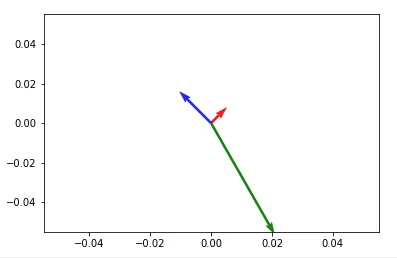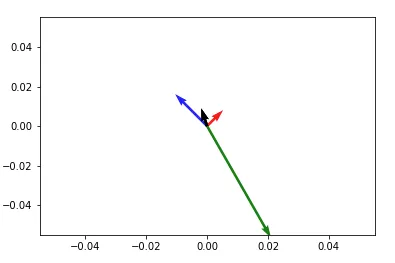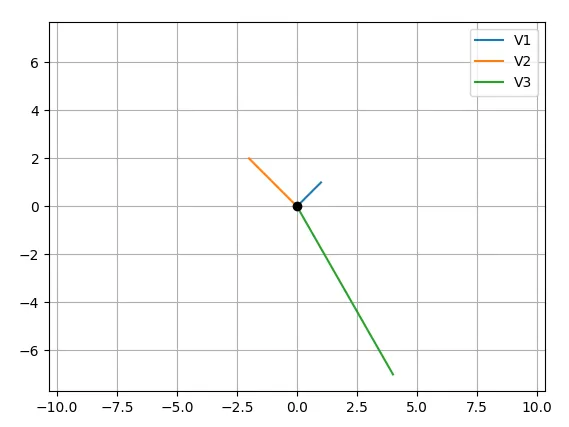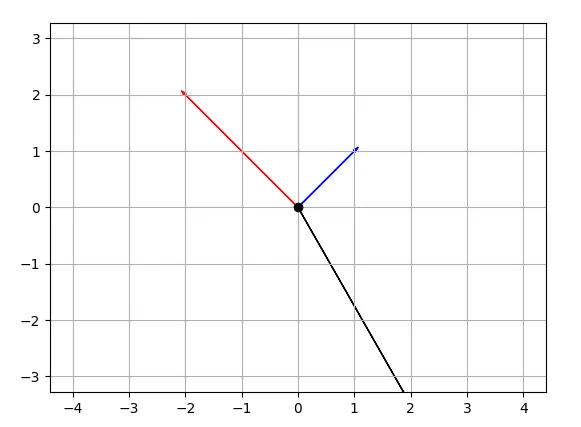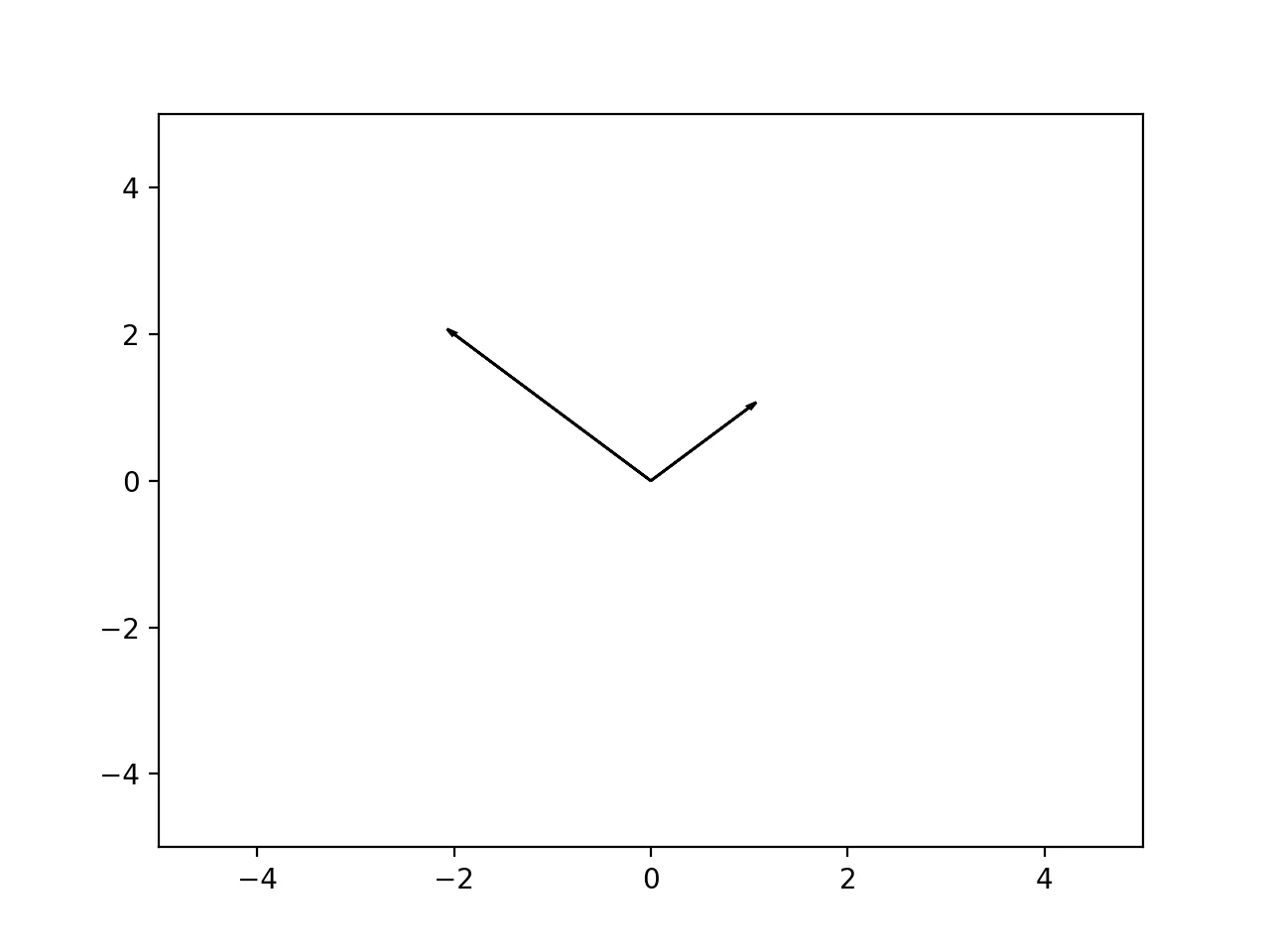我正在学习线性代数课程,希望能够将向量的操作可视化,比如向量相加、法向量等。
例如:
V = np.array([[1,1],[-2,2],[4,-7]])
在这种情况下,我想要绘制3个向量 V1 = (1,1), M2 = (-2,2), M3 = (4,-7)。
然后,我应该能够添加V1、V2到图中,绘制一个新的向量V12(全部在同一张图中)。
当我使用下面的代码时,绘图效果不像预期的那样。
import numpy as np
import matplotlib.pyplot as plt
M = np.array([[1,1],[-2,2],[4,-7]])
print("vector:1")
print(M[0,:])
# print("vector:2")
# print(M[1,:])
rows,cols = M.T.shape
print(cols)
for i,l in enumerate(range(0,cols)):
print("Iteration: {}-{}".format(i,l))
print("vector:{}".format(i))
print(M[i,:])
v1 = [0,0],[M[i,0],M[i,1]]
# v1 = [M[i,0]],[M[i,1]]
print(v1)
plt.figure(i)
plt.plot(v1)
plt.show()
